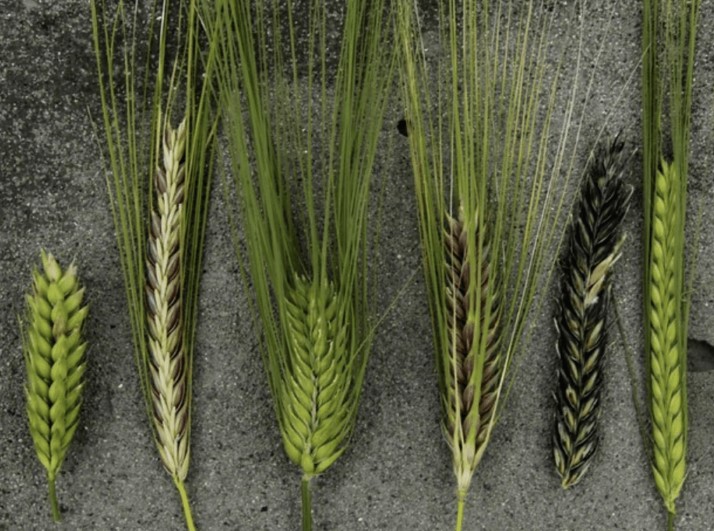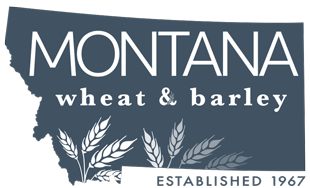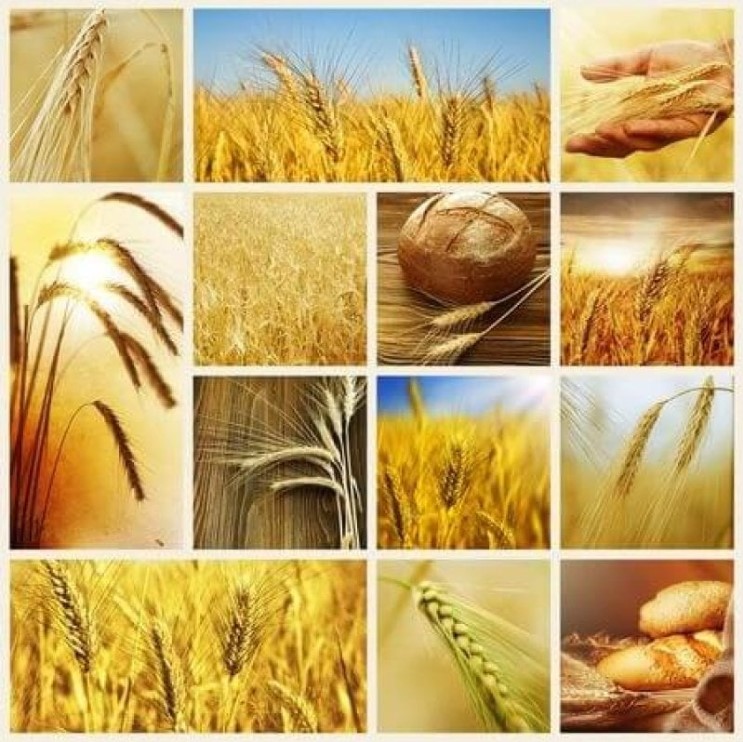Genetic Literacy Project — Archaeological evidence suggests that around 9,500 BCE, people in the Fertile Crescent began cultivating wheat as one of their first domesticated crops. To modern humans, it would be almost inedible: small but edible grains encased in a tough husk. Millennium after millennium, the grains were genetically modified by opportunistic farmers, gradually evolving into the varied wheat staple varieties we have today growing in most parts of the world. The great leap forward came in the 1950s when Norman Borlaug helped facilitate the development of high-yielding, disease-resistant, and adaptable wheat varieties became a key component in the Green Revolution.
While Borlaug’s breakthroughs were achieved using traditional plant breeding methods—crossbreeding and selecting wheat varieties for desirable traits—modern genetic modification (GM) and engineering involve directly altering the DNA of wheat in a lab. Genetic modification of wheat has primarily focused on improving yield, disease resistance, and adaptability to environmental stress. However, unlike other staple crops, the commercialization of GM wheat has been limited due to market resistance, regulatory hurdles, and consumer concerns. Unlike other GM crops such as corn and soybeans, GM wheat is a staple and has not been widely commercialized, primarily due to market resistance. But 35 years into the genetic modification revolution, the resistance appears to be fading.

HB4 wheat
Long delayed, the vision of genetically engineered wheat passed a major milestone this past month. The Argentine company Bioceres Crop Solutions Corp has been engineering a wheat that has been bred to be drought-tolerant and tolerant of the herbicide glufosinate. Last week the United States Department of Agriculture approved HB4 for U.S. cultivation. The Food and Drug Administration has already determined in 2022 that the variety was safe for humans to eat.
The United States is the fourth country to approve HB4 after Argentina, Brazil, and Paraguay. This clears the hurdle for HB4 in conjunction with U.S. breeders to begin closed-field trials. This follows the commercialization of HB4 soybeans a few years back. Rollout of the soybeans was ostensibly simpler because genetically engineered soybeans of various traits have been on the market for decades. Still, because of wheat’s place in our daily diet, novel environmental questions remain to be answered specific to wheat production.
GM wheat grown in the US?
Bioceres CEO Federico Trucco said that before United States sales could commence, he believes that HB4 must be developed with wheat genetics used in the U.S. and approved by countries that import U.S. wheat. “We’re already collaborating with some (local U.S.) wheat players, in particular the Colorado Wheat Research Foundation, with which we are developing seven types, focusing on hard red wheat for both winter and spring,” he said.
Full deployment is still a few years out. According to Successful Farming:
Bioceres is working with the U.S. Wheat Associates and the National Association of Wheat Growers, two U.S. farmer groups that require that new varieties like HB4 wheat win approval from U.S. export markets prior to their use. Major U.S. wheat importers such as Mexico, the Philippines, and Japan, have yet to approve HB4 wheat developed by Bioceres.
Nevertheless, HB4 has already been deployed in a limited, precursory way, in Argentina where the GM wheat was developed, according to Bloomberg:
About 20 flour mills in Argentina are already buying HB4 and hundreds of thousands of hectares of farmland have been sown with the strain this season in a country with a total wheat area of about 6 million hectares (14.8 million acres), Trucco said in the interview.

Understanding consumer hesitancy
Several interesting things are going on here. The first is that genetically-engineered wheat is a long time in coming. Among the big commodity crops, wheat is different from corn, soybeans, alfalfa, and cotton. Products made directly with wheat, from bread to Wheaties, are products that people eat while GM corn, soybeans, and alfalfa are used mostly to feed livestock or create ethanol. And people don’t eat cotton. That’s why the first main biotech traits—herbicide resistance and the insect-resistant Bt trait— generated less consumer resistance when they were introduced in the 1990s. The producers of wheat-based goods could have faced consumer backlash or boycotts.
In the early 2000s, Monsanto made significant progress in developing a genetically modified variety of wheat that was resistant to the weedkiller glyphosate, called Roundup Ready wheat. But farmers and consumers rebelled at the proposed rollout. Facing threats of a consumer boycott, the Wheat Growers Association reversed their prior enthusiastic welcoming of GM wheat. Monsanto aborted its plans in Canada and the United States.
That means, globally, that we’ve had two hundred million acres of wheat grown for three decades with sub-optimal herbicide use. This approval means that wheat may finally be coming out of the dark ages.
Climate adaptive wheat
A successful drought-tolerance trait is a very big deal. It has been a bit of Holy Grail since the first major biotech hurdles —Bt and Roundup Ready—were tackled. The issue is that while drought tolerance isn’t that hard to model in plants, it usually comes with a big yield penalty. If there is no drought, the plant will produce considerably less than a comparable competitor not bred to survive drought. The trick is to increase tolerance to drought while keeping yield comparable if no drought comes.
The farmer, in purchasing this seed and not that seed is making a bet. There probably won’t be a drought but there might be. If the drought is unpredictable but comes three out of ten years, then they would be reluctant to sacrifice seven years of maximum production. While a big yield penalty might be erased over ten or fifteen years, that’s still not a good bet for farmers each time they face a season. They need the seed to work every year. If Bioceres really has a competitive drought-tolerant trait for wheat and soybeans as it claims, that’s a big deal.
Glufosinate not glyphosate
The herbicide glufosinate is best known as BASF’s Liberty herbicide. Like Roundup, it is paired with herbicide-tolerant crops, currently corn, soybeans, canola, sugar beets, and cotton. Glufosinate is an interesting technology. It’s a broad-spectrum herbicide used very similarly to glyphosate but produced by several species of Streptomyces soil bacteria. This makes it similar to the Bt trait which draws from the action to the soil bacterium Bacillus thuringiensis (or Bt). Bt produces Cry proteins (crystal proteins) that bind to receptors in the guts and kill various sucking and boring pests that eat crops especially corn and cotton in the U.S. Over the past decade Bt eggplant has been a big success in Bangladesh.
In the 1960s and early 1970s, scientists at the University of Tübingen and at the Meiji Seika Kaisha Company independently discovered that species of Streptomyces bacteria produce a compound that inhibits bacteria. They named this compound phosphinothricin. Phosphinothricin interrupts the metabolism of nitrogen in plants much the way that glyphosate interrupts the production of sugars in the photosynthesis of plants. The compound is drawn from nature and works very specifically on the metabolism of plants. It is not a pesticide that has triggered any concern of note.
Prospects
Founded relatively recently, in 2001, Bioceres (market cap approximately; $600M) is among a new breed of medium-sized seed and input company that have been thriving as the cost of biotechnology has come down and the scope of the technologies deployed in agriculture have widened. This new ecosystem of nimble, innovative companies compete and collaborate with the major behemoths even as the number of major players was allowed to drop from six to four—Bayer, Corteva, ChemChina’s Syngenta Group, and BASF. Bioceres has been involved in selling various farming inputs such as seed treatments, pesticides, and fertilizers along with newer biological products such as bacterial inoculants in soybean or micro-beaded NPKs. In an interview Bioceres CEO Federico Trucco described their creative approach:
From an institutional design perspective, its collaborative or “open” approach to originating and funding new technologies represented at the time a shift from the deep-pocketed “in-house” paradigm that dominated biotech R&D almost two decades ago. Also, the fact that Bioceres’ discovery efforts were not directed at crop protection solutions, widely dominated by first-generation herbicide and insect tolerance technologies, but instead at the elusive field of crop stress tolerance, allowed us to operate on a somewhat vacant space.
The focus on crop stress-tolerant products offers the possibility of huge growth for the companies and widespread benefits to farmers and consumers. The model has already been extended to other crops. The new HB4 soybeans and wheat are definitely swinging with bigger bats. And most of the firms in this space are already developing novel crops by way of CRISPR and other gene-editing technologies rather than the old-fashioned route of recombinant DNA.
Unlike traditional genetic modification, which often involves introducing foreign genes from other organisms, CRISPR can be used to “edit” the wheat plant’s genome, creating small changes that lead to desirable traits without the introduction of foreign DNA. The regulatory framework for gene-edited crops is also less stringent than for traditional GM crops in many countries. The Holy Grail for the future of wheat will focus on four traits:
Gene Knockout for Disease Resistance: CRISPR can be used to “knock out” specific genes in wheat that make it susceptible to diseases. For example, by disabling certain genes, wheat can be made resistant to powdery mildew, a common fungal disease. Researchers have been able to target and modify specific genes in wheat that are involved in disease susceptibility, improving the plant’s natural defenses.
Yield Improvement: CRISPR is also being used to target genes involved in wheat’s growth and productivity. Scientists have identified key genes that control traits like grain size and the number of grains produced per plant, and by editing these genes, they aim to improve wheat yield.
Drought and Heat Tolerance: Gene editing has the potential to make wheat more resilient to environmental stress. For example, by editing genes related to water regulation and stress response, wheat can be made more drought-tolerant, which is increasingly important as global temperatures rise and water availability becomes more limited.
Gluten Modification: CRISPR has also been used to modify the gluten proteins in wheat. Gluten is a complex of proteins that can cause health problems for people with celiac disease or gluten sensitivities. Researchers are exploring ways to use gene editing to create wheat varieties with reduced levels of immunogenic gluten proteins, potentially making wheat-based foods safer for people with gluten intolerances.
Our inboxes and news feeds are stuffed daily with ‘the next big thing’. Most don’t pan out but this one is already off to a good start and the problems it is tackling are significant indeed.
Marc Brazeau is the GLP’s senior contributing writer focusing on agricultural biotechnology. He also is the editor of Food and Farm Discussion Lab. Marc served as project editor and assistant researcher on this series. Follow him on X @eatcookwrite

